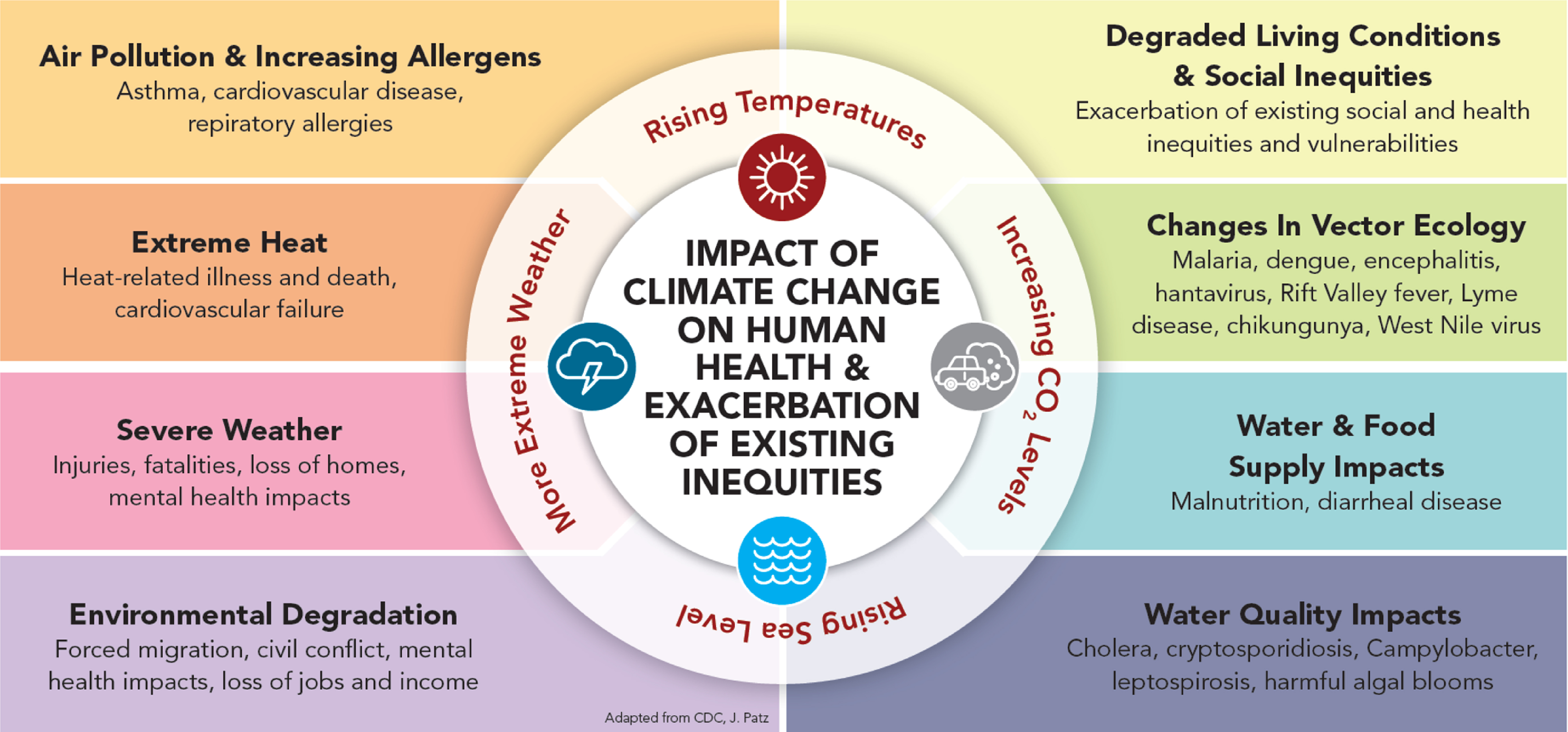Throughout the spring and summer, local climate action groups have not let the uncertain times curtail their efforts to keep up the fight against climate change. In fact, many groups like the Climate Action Team (CAT) at Unitarian Universalist Church see the world’s response to COVID as a kind of “pop quiz” for the coming hurdles of addressing climate change. To fully unpack the connections, they invited Gabriel Durham, UH Sustainability Coordinator, as a discussion moderator and presenter for their monthly teleconference.
“If you look throughout human history, changes in the environment and climate are linked with the emergence of novel diseases.” Durham said in his opening remarks. “On top of that, our environmental quality is also a major factor in how well one can recover from disease.”
One powerful example offered was the fact that the Black Death of Medieval Europe occurred during a mini ice-age. The long term unusual cold not only kept people generally sicker and more prone to infection, but also caused economic turmoil due to shorter harvests and dwindling resources. This chronic stress and famine likely killed a large percentage along with the virus.
“This relationship between the climate and virus spread is fascinating, and I can see the feedback going on. But what does this have to do with COVID and our climate now?” One participant asked.
“Firstly, it important to address the uncomfortable fact that our globally interconnected economy is the vehicle that spread this pandemic. The more closely packed and interlinked our world becomes, the more of these mass infections we can expect.” Durham replied. “Secondly, lockdowns caused a drastic drop in greenhouse gas emissions with immediate positive environmental results. That sends a sobering proof that the same economic activities that spread the virus are also causing climate change.”
The final part of the discussion focused on what each member of the team could do to help address climate change while still working through the pandemic. The team offered the following best practices:
- Continue telecommuting if it has worked for you (reduces contact and carbon footprint)
- Start or Support a Community Garden (local gardens mean less travel and shipping emissions and can help pandemic related food insecurities)
- Make PPE with recycled goods and make sure all are properly disposed of (mask liter is already a problem)
- Incorporate as many Vegan meals into your day as you can (meat is environmentally expensive, and pandemics disrupt packing plants)
- Engage with local government (be vocal about what needs to be handled better next time)
For more information on the complex links between climate and disease, the figure below is a helpful graphic from the California Deaprtment of Public Health. Gabriel can also be reached at the contact information below. For information on CAT, their UH representative is Dr. Karoline Mueller.

Gabriel Durham, Sustainability Coordinator
Office of Sustainability
University of Houston
(713) 743-6985